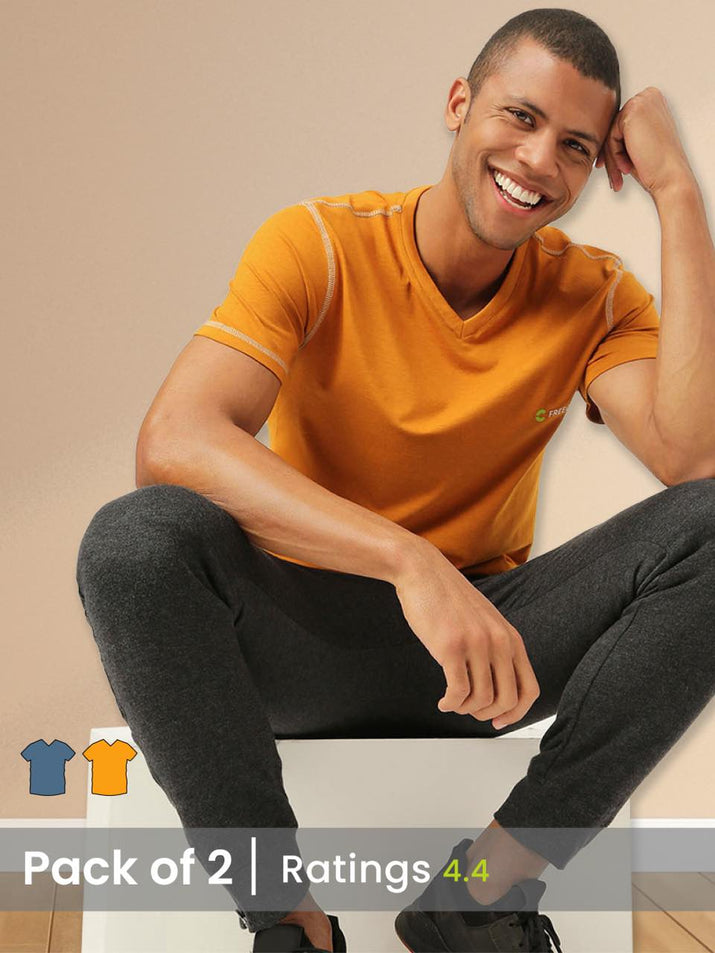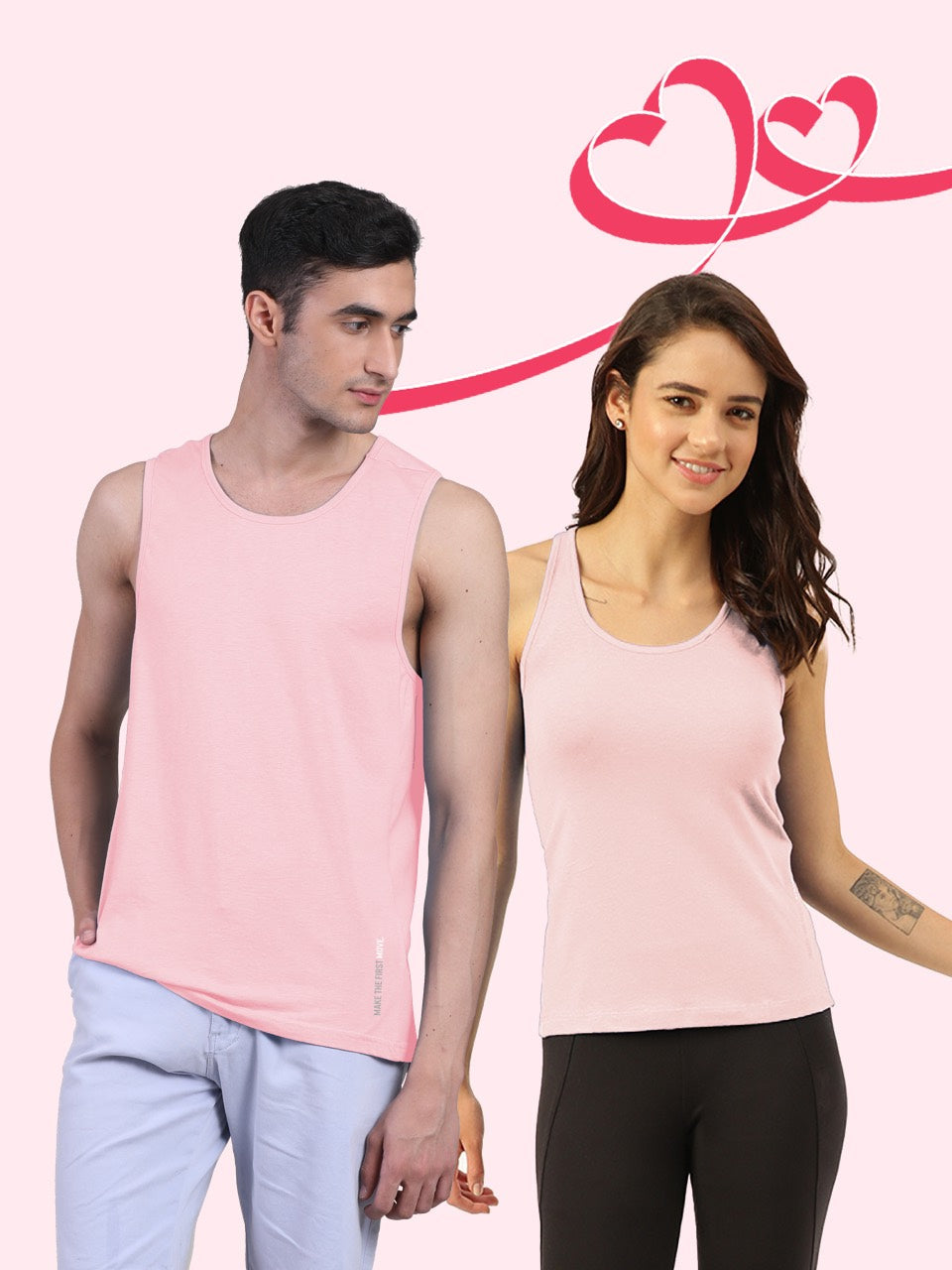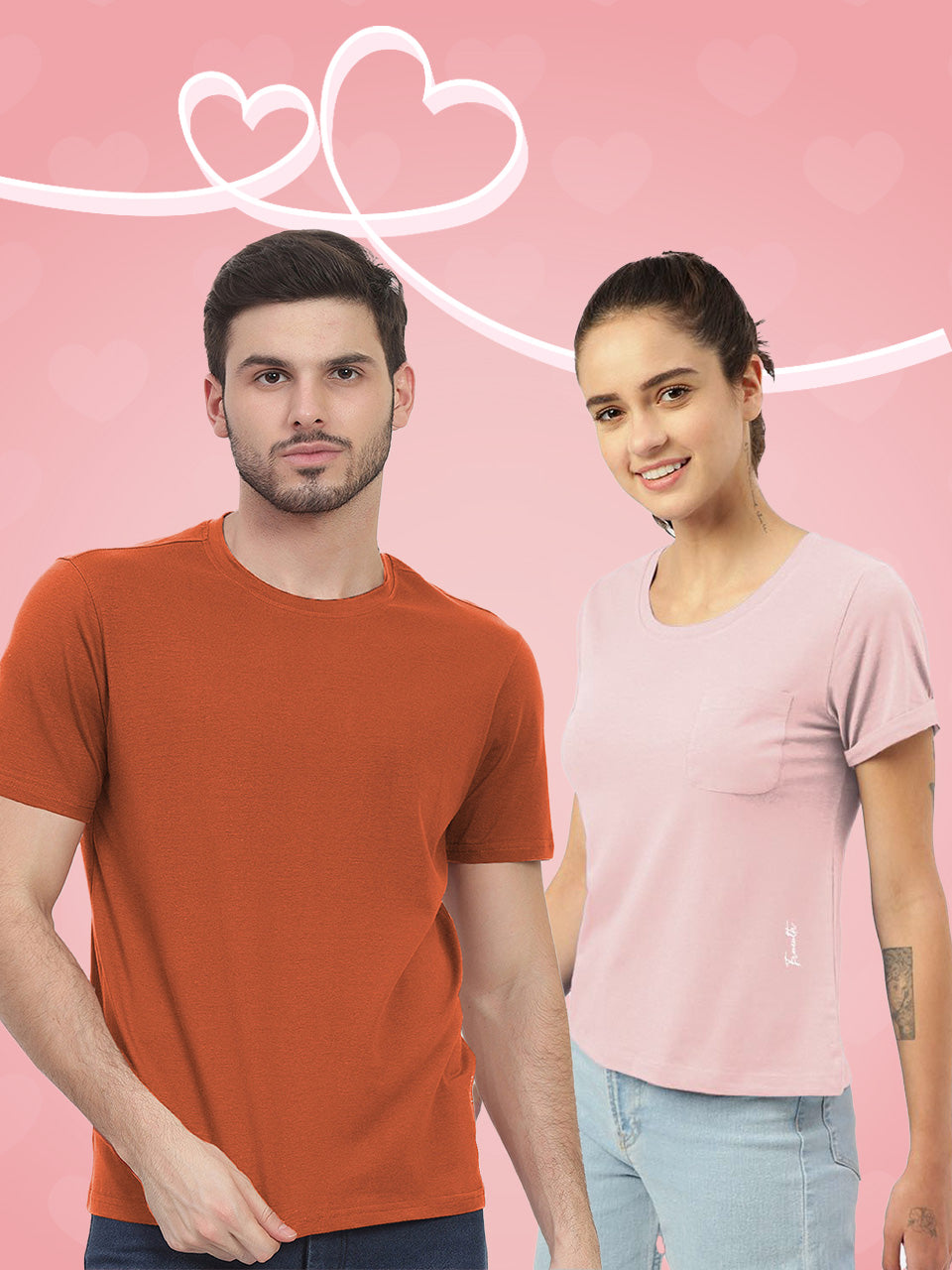The ubiquitous tee shirt, once a simple undergarment, now stands as a testament to advanced textile engineering, fundamentally redefining everyday comfort. Contemporary designs elevate the experience, utilizing sophisticated blends like mercerized Pima cotton or modal-Tencel fibers, often enhanced with enzyme washes, to achieve an exceptionally soft, almost silken handfeel. This focus on premium tactility seamlessly merges with the garment's inherent casual versatility, making these foundational pieces indispensable across a spectrum of modern aesthetics—from minimalist 'quiet luxury' ensembles to relaxed, athleisure-inspired layering. The evolution of the tee reflects a nuanced understanding of consumer demand for effortless style that prioritizes both luxurious comfort and adaptable functionality in a single, refined silhouette.

Understanding the Essence of Softness in Tees
The humble tee has evolved from a simple undergarment into a cornerstone of modern fashion, celebrated for its comfort and adaptability. At the heart of its appeal lies the often-coveted "soft feel." But what exactly contributes to this tactile sensation, making certain tees feel like a second skin while others fall short? It's a complex interplay of material science, manufacturing techniques. meticulous finishing processes.
When we talk about the softness of tees, we're primarily referring to the fabric's drape, smoothness against the skin. pliability. This isn't merely a subjective preference; it's a measurable characteristic influenced by several key factors.
- Fiber Type: The fundamental building block of any fabric, the type of fiber used in tees significantly dictates its inherent softness. Natural fibers like cotton, especially premium varieties, are renowned for their gentle touch.
- Yarn Construction: How these fibers are spun into yarn plays a crucial role. Finer, longer staple fibers can be spun into smoother, more uniform yarns, resulting in a softer hand-feel.
- Knitting Technique: For most tees, a jersey knit is employed. The specific tension and gauge of this knit can influence how supple or rigid the fabric feels.
- Finishing Processes: Beyond the initial creation, a range of treatments can transform a fabric's texture, enhancing its softness and overall appeal.
The Science Behind the Soft Touch
Delving deeper into what makes tees so incredibly comfortable reveals a fascinating blend of textile engineering and chemistry. The journey from raw fiber to a supremely soft tee involves several critical stages.
Fiber Length and Fineness
The quality of the raw material is paramount. Cotton, for instance, comes in various grades. Long-staple cotton varieties, such as Pima or Supima cotton, are prized for their exceptional softness. Their longer fibers mean fewer fiber ends protrude from the yarn, resulting in a smoother, more uniform surface that feels incredibly soft against the skin. In contrast, shorter staple cotton produces more fuzzy, coarser threads. Similarly, regenerated cellulosic fibers like Modal and Tencel (Lyocell) are engineered to have very smooth, fine filaments, contributing to their silky feel.
Weaving and Knitting Techniques
While some fabrics are woven, the vast majority of tees are made from knitted fabrics, predominantly jersey knits. This particular knit structure creates a fabric that is inherently elastic and drapes well. The loops in the jersey knit allow for flexibility and a certain plushness. A finer gauge knit, meaning more stitches per inch, typically results in a denser, smoother. often softer fabric for tees. The tension during knitting also influences the fabric's final hand-feel.
Finishing Processes: Enhancing Softness
Once the fabric is knitted, a series of finishing treatments can dramatically improve its softness. These processes are crucial for elevating the tactile experience of tees.
- Enzyme Washes: This biochemical process uses enzymes (typically cellulase for cotton) to break down and remove tiny fibers called "fuzz" from the fabric surface. The result is a smoother, softer. often more lustrous fabric. It’s a common treatment for many premium tees.
- Silicone Softeners: Applying silicone-based softeners creates a thin, slippery layer on the individual fibers, reducing friction and imparting a silky, slick feel. This is a widely used method to achieve immediate softness.
- Brushing or Peaching: Mechanical processes like brushing involve using abrasive rollers to raise the surface fibers, creating a fuzzy, peach-skin like texture. This adds a velvety softness, often seen in flannel or specific types of cotton tees.
- Mercerization: Specifically for cotton, mercerization is a chemical treatment that swells the cotton fibers, increasing their strength, luster. dye uptake. can also contribute to a smoother, softer feel.
Understanding these steps helps appreciate why some tees command a higher price point – the investment in quality fibers and sophisticated finishing pays off in superior comfort and durability.
Casual Versatility: More Than Just a Basic
Beyond their unparalleled comfort, tees are celebrated for their incredible versatility, effortlessly bridging the gap between ultra-casual and subtly refined. This adaptability is a key reason why tees remain a perennial favorite across all demographics, from teens seeking effortless style to adults prioritizing comfort and ease.
From Loungewear to Layering Essential
The beauty of tees lies in their chameleonic ability to adapt to almost any context. A soft, well-fitting tee can be:
- The Ultimate Loungewear: Paired with sweatpants or shorts, it forms the perfect ensemble for relaxing at home or running quick errands. The comfort of quality tees makes them ideal for downtime.
- A Casual Staple: Worn with jeans or chinos, a tee is the epitome of relaxed, everyday style. It’s the go-to for weekend outings, casual meet-ups. effortless everyday wear.
- A Smart-Casual Foundation: Layered under a blazer, a denim jacket, or an open button-down shirt, a plain tee can elevate an outfit, adding a touch of laid-back sophistication. Opt for a solid color and a more structured fabric for this look.
- A Performance Base Layer: With advancements in fabric technology, many tees now feature moisture-wicking and breathable properties, making them suitable for active wear, light workouts, or as a comfortable base layer under outerwear.
Styling Your Tees for Every Occasion
The secret to maximizing the versatility of your tees lies in mindful styling. Consider the fit, color. accompanying pieces:
- Fit Matters: A slim-fit tee can look sharp under a jacket, while an oversized tee offers a more relaxed, street-style vibe. interpret your body type and the look you're aiming for.
- Color Psychology: White, black. navy tees are timeless and endlessly versatile. Experiment with earthy tones or pastels for seasonal variation, or bold colors for a statement.
- Accessorize Thoughtfully: A simple necklace, a stylish watch, or even a well-chosen belt can transform a basic tee outfit. For men, a pair of quality sneakers or loafers can elevate the look; for women, a statement bag or layered jewelry.
- Fabric Choice for Formality: While all tees are inherently casual, a tee made from a slub cotton or linen blend might feel more relaxed, whereas a tightly knit Pima cotton tee can lean towards smart-casual.
The enduring appeal of tees stems from this unique combination of effortless comfort and boundless styling potential. They are truly an indispensable item in any wardrobe.
Choosing Your Perfect Tee: A Buyer's Guide
With an overwhelming array of options, selecting the ideal tee can feel daunting. But, by focusing on a few key elements, you can make informed decisions that ensure comfort, style. longevity. The goal is to find tees that not only feel good but also align with your values and lifestyle.
Factors to Consider When Buying Tees
-
Fabric Composition: This is arguably the most critical factor for softness and durability.
- 100% Cotton (Pima, Supima, Organic): Excellent breathability, natural softness. good absorbency. Pima and Supima offer superior strength and softness due to longer fibers. Organic cotton ensures no harmful pesticides are used, making it better for the environment and often softer against sensitive skin.
- Modal/Tencel (Lyocell): Regenerated cellulosic fibers known for their exceptional softness, silky drape. resistance to shrinking and creasing. They often feel cooler than cotton.
- Bamboo: Similar to Modal, bamboo fabric is incredibly soft, breathable. has natural moisture-wicking and antibacterial properties.
- Blends (Cotton-Poly, Cotton-Modal): Blends can offer the best of both worlds – the softness of cotton or modal combined with the durability, wrinkle resistance, or quick-drying properties of synthetic fibers like polyester.
-
Fit and Cut: Beyond personal preference, the fit influences how a tee looks and feels.
- Classic/Regular Fit: Offers room in the chest and waist, a comfortable, timeless silhouette.
- Slim Fit: Tapers slightly through the body and arms, providing a more modern, tailored look without being restrictive.
- Relaxed/Oversized Fit: Provides ample room for a laid-back, contemporary aesthetic, often preferred for a streetwear vibe.
- Necklines: Crew neck (classic, versatile), V-neck (elongates the neck, can be more flattering), Scoop neck (more feminine, wider opening), Henley (buttoned placket, adds detail).
- Construction Quality: Examine the stitching. Double-stitched seams on the shoulders, collar. hem indicate better durability. Look for smooth, flat seams that won't chafe. A well-constructed collar will hold its shape over time.
- Ethical and Sustainable Sourcing: For many consumers, the provenance of their tees matters. Look for certifications like GOTS (Global Organic Textile Standard) for organic cotton, Fair Trade, or OEKO-TEX Standard 100, which ensures no harmful substances are present. Supporting brands committed to sustainable practices ensures your purchase has a positive impact.
Actionable Takeaways: Maintaining Your Tees
To ensure your beloved tees retain their softness and shape for years, proper care is essential. Neglecting care instructions can quickly degrade fabric quality and fit.
- Read the Label: Always follow the care instructions on the garment tag. This is tailored to the specific fabric blend.
- Wash Cold, Gentle Cycle: Cold water helps prevent shrinking and fading, while a gentle cycle reduces wear and tear on the fibers.
- Use Mild Detergent: Harsh chemicals can strip natural fibers of their softness. Opt for a gentle, pH-neutral detergent.
- Avoid Over-Drying: High heat can damage fibers and cause shrinking. Tumble dry on low heat or, ideally, air dry by laying flat or hanging. This significantly prolongs the life and softness of your tees.
- Separate Colors: Wash dark and light tees separately to prevent dye transfer.
By investing in quality tees and caring for them correctly, you ensure a comfortable, stylish. sustainable wardrobe foundation.
The Evolution of Tees: A Brief History and Modern Trends
The journey of tees from utilitarian undergarment to global fashion icon is a testament to their enduring appeal and adaptability. Understanding this evolution helps appreciate their current status and the exciting innovations shaping their future.
From Undergarment to Cultural Icon
The origins of the modern tee can be traced back to the early 20th century. Initially, it was a simple, collarless, short-sleeved cotton shirt worn by laborers and soldiers as an undershirt, providing a comfortable layer beneath uniforms or work clothes. Its "T" shape when laid flat gave it its name.
The turning point for tees as outerwear arrived in the 1950s. Hollywood legends like Marlon Brando in "A Streetcar Named Desire" and James Dean in "Rebel Without a Cause" famously donned plain white tees, transforming them into symbols of rebellion, cool. effortless masculinity. This cinematic exposure catapulted the tee into mainstream fashion, making it acceptable and even desirable to wear on its own.
Throughout subsequent decades, tees continued to evolve. From band merchandise and political statements in the 60s and 70s to designer interpretations in the 80s and 90s, the tee became a canvas for personal expression and a barometer of cultural trends. Today, tees are a ubiquitous garment, found in every wardrobe and adapted for every style.
Modern Trends and Sustainable Innovations in Tees
The contemporary tee market is characterized by a strong emphasis on sustainability, technological advancement. a continued focus on comfort and quality. Consumer demand for ethically produced and environmentally friendly clothing has driven significant innovation in the production of tees.
- Sustainable Materials: The rise of organic cotton, recycled polyester (RPET), hemp. innovative blends like Tencel and Modal underscores a commitment to reducing environmental impact. Brands are increasingly transparent about their supply chains and sourcing practices for tees.
- Performance Fabrics: Beyond basic cotton, many tees now incorporate advanced fabric technologies. Moisture-wicking properties keep the wearer dry, anti-odor treatments prevent bacterial growth. UV protection offers added functionality, especially for activewear tees.
- Longevity and Durability: There's a growing movement towards "slow fashion," where consumers seek out high-quality tees designed to last, reducing the need for frequent replacements. This involves investing in superior fabric construction and robust stitching.
- Gender-Neutral and Inclusive Sizing: The fashion industry is moving towards more inclusive sizing and gender-neutral designs for tees, reflecting a broader shift in societal attitudes and catering to diverse body types and preferences.
- Digital Printing and Customization: Advances in printing technology allow for high-quality, intricate designs and personalized tees, empowering individuals and businesses to create unique garments.
The story of tees is one of constant reinvention, blending timeless comfort with cutting-edge innovation. As we move forward, expect even greater emphasis on ethical production and advanced material science, ensuring tees remain a relevant and cherished wardrobe staple.
Comparison of Popular Tee Fabrics
Choosing the right fabric for your tees is crucial, as it dictates everything from softness and breathability to durability and care requirements. Here's a comparison of some of the most popular materials used in high-quality tees, highlighting their unique characteristics.
| Fabric Type | Pros | Cons | Best For |
|---|---|---|---|
| 100% Cotton (Standard) |
|
| Everyday casual wear, basic tees, layering |
| Pima/Supima Cotton |
|
| Premium basic tees, high-quality casual wear, sophisticated layering |
| Organic Cotton |
|
| Eco-conscious consumers, sensitive skin, everyday comfort |
| Modal |
|
| Luxurious loungewear, soft layering pieces, travel tees |
| Tencel (Lyocell) |
|
| Premium casual wear, active lifestyle tees, eco-friendly fashion |
| Cotton-Polyester Blend |
|
| Active wear, everyday durable tees, uniform shirts |
This table offers a snapshot to help you navigate the world of tees. Your ultimate choice will depend on your personal preferences for feel, desired function. budget.
Conclusion
Ultimately, the humble tee, with its unparalleled soft feel and inherent casual versatility, stands as the unsung hero of any modern wardrobe. Don't just view it as a basic; recognize it as a foundational piece, a canvas for self-expression. My personal tip? Invest in quality fabrics, perhaps a premium cotton blend. play with oversized fits – a current trend that offers both comfort and a chic, effortless vibe. I've found that a well-chosen tee can transition seamlessly from a relaxed WFH setup to an impromptu coffee run with just a quick accessory swap. Remember, the true power lies in its adaptability, allowing you to curate looks that reflect your unique style. For more insights on elevating everyday essentials, consider exploring how quality fabrics define casual elegance and breathable wear. Embrace the tee not just for its comfort. for its endless styling potential, making every day an opportunity to feel good and look effortlessly put-together.More Articles
Tank Top for Woman – Everyday Comfort & Effortless LayeringInner Wear for Woman – Breathable Fabrics & Gentle Feel
Freecultre Underwear Woman – Sustainable Style & Superior Comfort
Woman's Boxer – Breathable Fabric & Stylish Loungewear
Men's T-Shirts – Casual Elegance & Breathable Wear
FAQs
What makes these tees feel so incredibly soft?
Our tees achieve their signature softness through a premium blend of high-quality fabrics, often combining fine cotton with luxurious modal or rayon. This thoughtful combination, along with a special weaving process, creates a textile that's exceptionally gentle and smooth against your skin.
How versatile are these tees really for everyday wear?
Super versatile! They're designed to be your absolute go-to for almost any casual situation. You can easily pair them with jeans for a relaxed look, layer them under a jacket or cardigan for a smart-casual vibe, or even throw them on with athletic shorts for ultimate comfort during a weekend stroll.
What's the best way to wash these tees so they stay soft and last longer?
To keep your favorite tees feeling great, we recommend washing them inside out in cold water on a gentle cycle. For drying, tumble dry on low heat or, even better, lay them flat to air dry. Steer clear of harsh bleaches or very high heat, as these can damage the fabric fibers over time.
Are these tees breathable enough for hot days or active use?
Absolutely! The fabric blends we use are chosen not just for their amazing softness but also for their natural breathability. They allow air to circulate freely, which helps keep you cool and comfortable, even when the temperature rises or during light activity.
What kind of fit should I expect from these tees?
You can expect a comfortable, relaxed fit that isn't too tight or too baggy. They're crafted to drape nicely on your body and offer plenty of freedom of movement, making them perfect for all-day wear without ever feeling restrictive.
Do these tees come in many different colors or styles?
Yes, we offer a wide range of popular colors to suit every personal preference and outfit combination. You'll also find various classic necklines, such as crew necks and V-necks, giving you plenty of options to effortlessly mix and match your casual wardrobe.
Will these tees shrink much after I wash them?
We've designed our tees to minimize shrinkage. While a tiny amount of natural shrinkage might occur with any cotton-based garment, following our recommended care instructions (cold wash, low heat dry) will help maintain their original size and shape effectively.






